The first major consideration in Problem Solving is to understand, that not one size fits all with respect to the types of problems and the approach to take.
Adopting a “one size fits all” method to solving different types of problems is a common mistake, not every problem requires an 8 step Practical Problem Solving A3! (as shown in the picture)
A lot of Problem Solving can be done rapidly without spending a large amount of time on data analysis, but rather through fact based understanding and simple root cause analysis
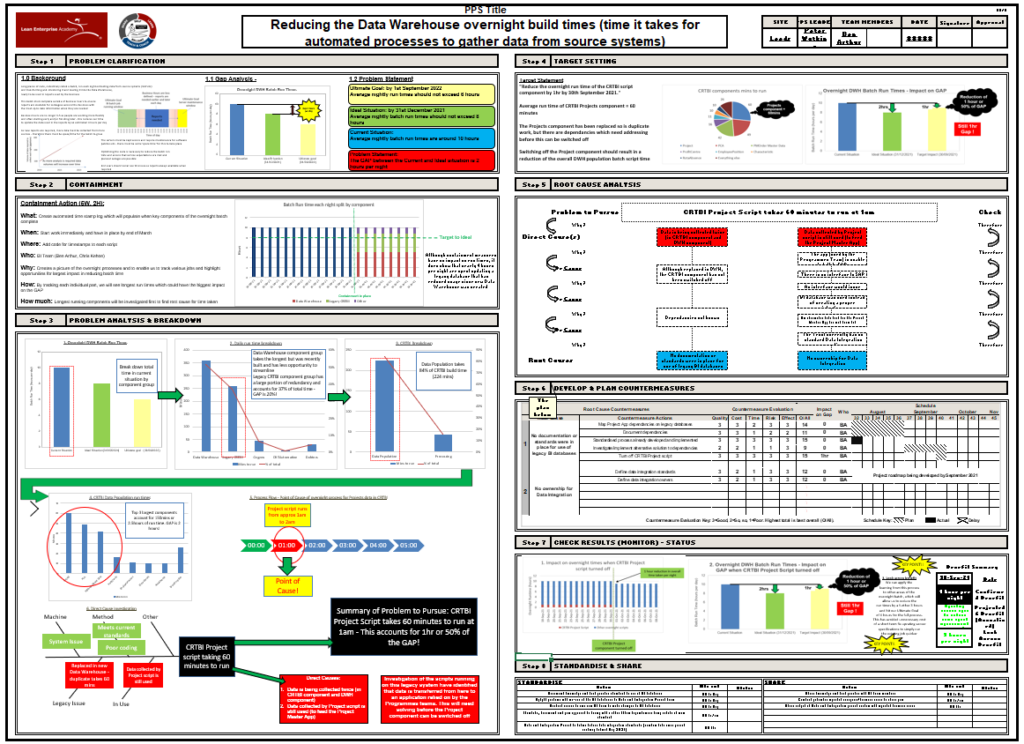

You may have heard of the saying “if I only have a hammer then every problem is a nail”
This type of approach can lead to the inappropriate use of methods, peoples time, resources, costs and also developing the wrong capabilities at the wrong levels in an organisation.
Embeding problem solving as part of peoples daily work routines is critical to creating the right culture. Having a visible Performance Management Process that highlights problems, captures them and ensures they are manage quickly through a PDCA process.
This is critical to ensure the stability of the day to day work.
If you don’t have a process to ensure the problem solving is visible and followed through , then most people only end up containing the problem – not solving it !
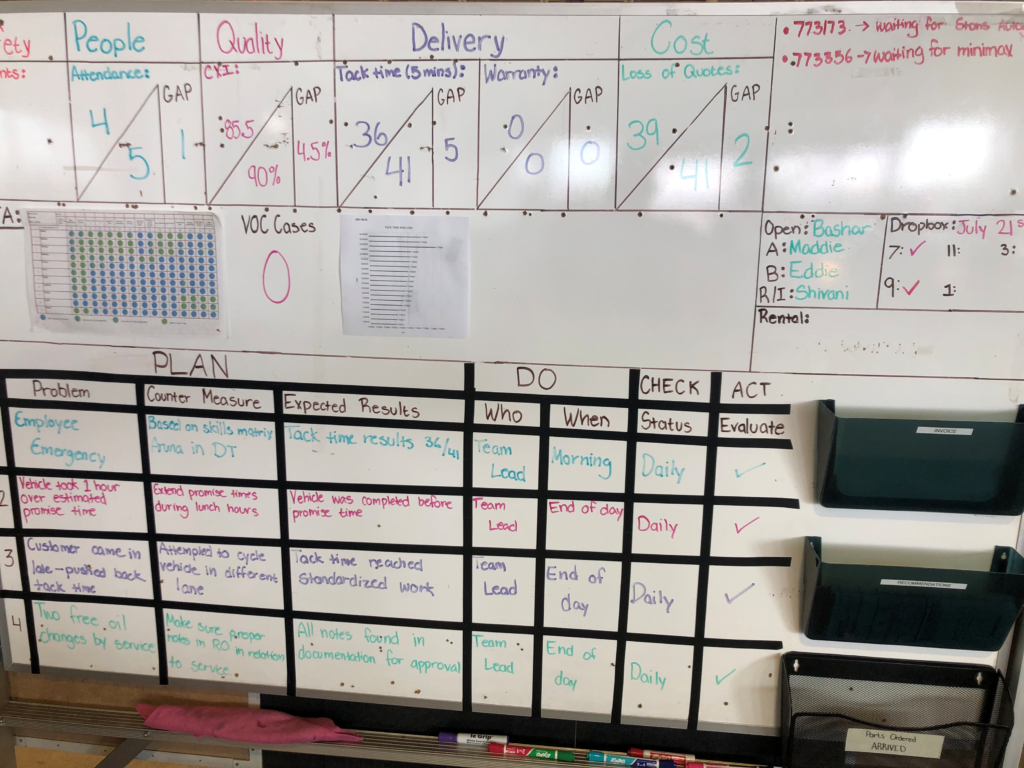
Use our Simple Problem Solving Framework as a Guide
At LEA we have tried to develop a simple framework to give some guidance around the different methods you can apply to the different types of problems.
Not Every Problem Requires an A3, as there are many different problem solving methods available to consider. But it’s critical to try and select the most appropriate level method for the type of problems you are trying to solve.
The below simple visual framework places the problem solving methods into four main levels: React, Rapid, Practical & Advanced. (However there are also cross over points between the levels that you identify as you gain more experience as a Problem Solver)
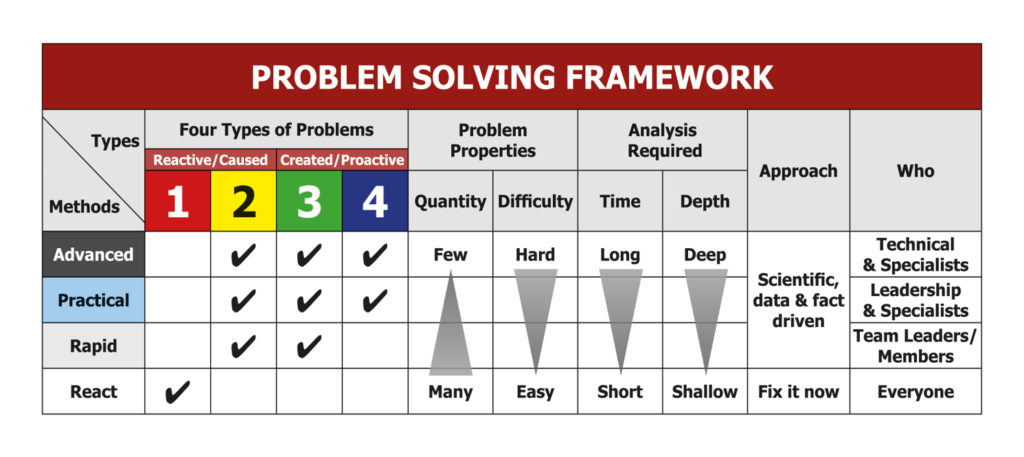
Watch this video for a short explanation of the Framework
Dave Marriott explains this simple Problem Solving Framework as a guide to understanding the different types of problems and the methods you can use to define them.
Key Learnings Points from the Video
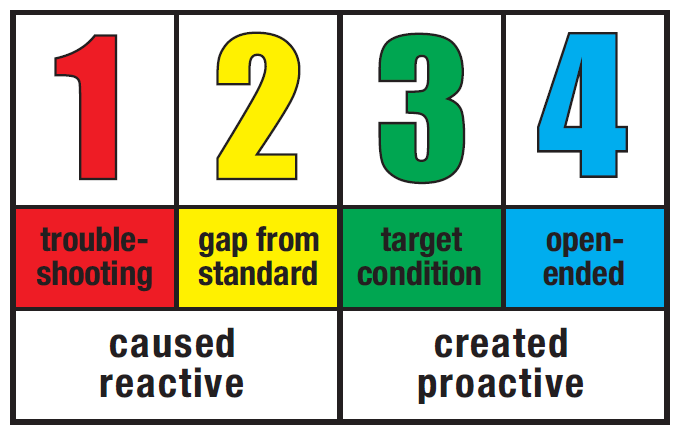
In his book, Art Smalley did a great job of describing The four main types of problems
Before using a method to solve a problem you need to understand what type of problem you are trying to solve
Watch this video by Art Smalley to learn more about the Four Types of Problems
Remember Not Every Problem Requires an A3!
When selecting a problem solving method there are also four main considerations to think about:-
Problem Solving Methods can cross over the four types of problems
You cannot “box” a problem solving method to solving particular types of problems
You need to consider the complexity and time needed to resolve it
Such as Type 4 Innovation orientated Problems – could be small, medium or large problems to solve
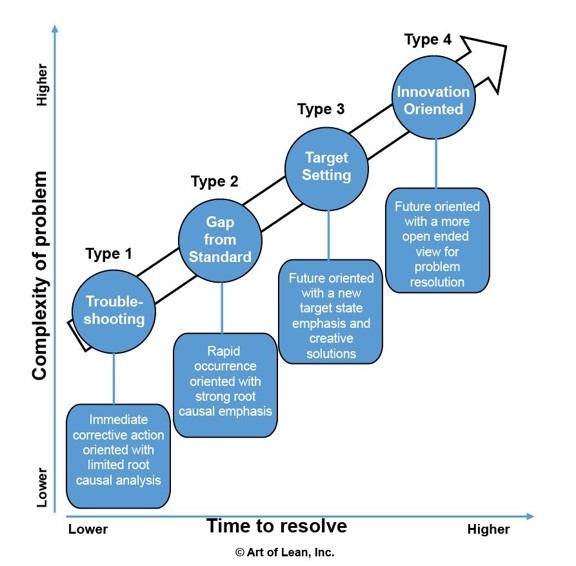
For difficulty & time consider the amount of analysis a problem requires
From a simple logical cause and effect problem such overspending your budget when shopping (doesn’t require much analysis). Versus a “multiple variable” problem such as a “pitted paint surface finish on a car”. This would have many environmental, material and process variables involved (would take time to gather the data needed and analyse all the possibilities).
Remember if you just consider using one method all the time you could end up:-
Taking a long time to solve a simple problem by using an advanced statistical method that requires in depth analysis
Most “day to day” business problems do not need a deep level of statistical analysis
But you could fail to solve a complex multi variable problem by using a simple method that can’t scope out all the variables
This Diagram from Art Smalley’ Book shows complexity & Time depending on the difficulty of the problem.
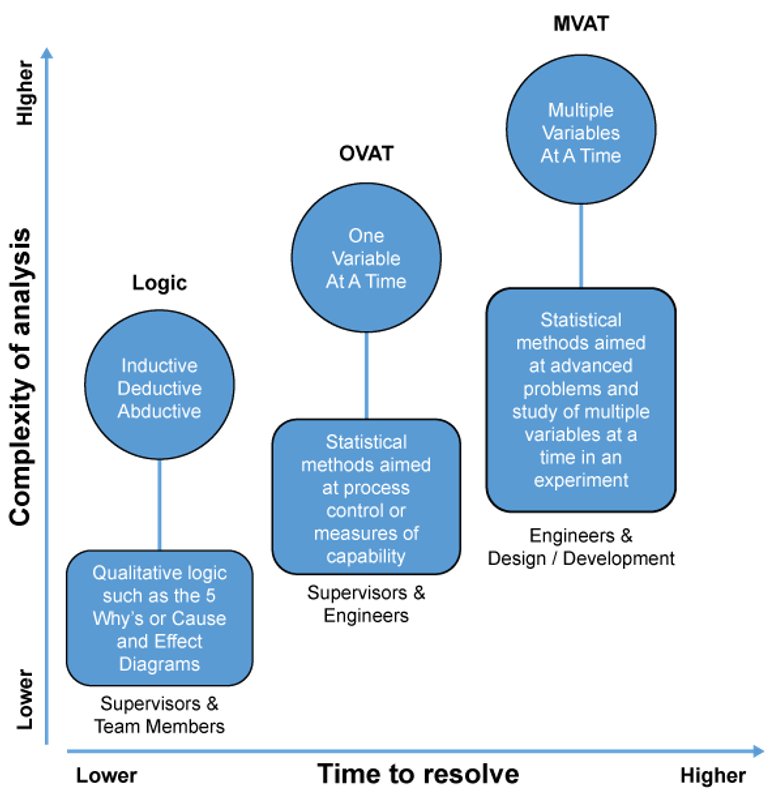
Density of problems & WHO should also be considered
A very few large complex problems in an organisation may need adressing by a selected skilled team. Or supported by a highly capable expert or leader
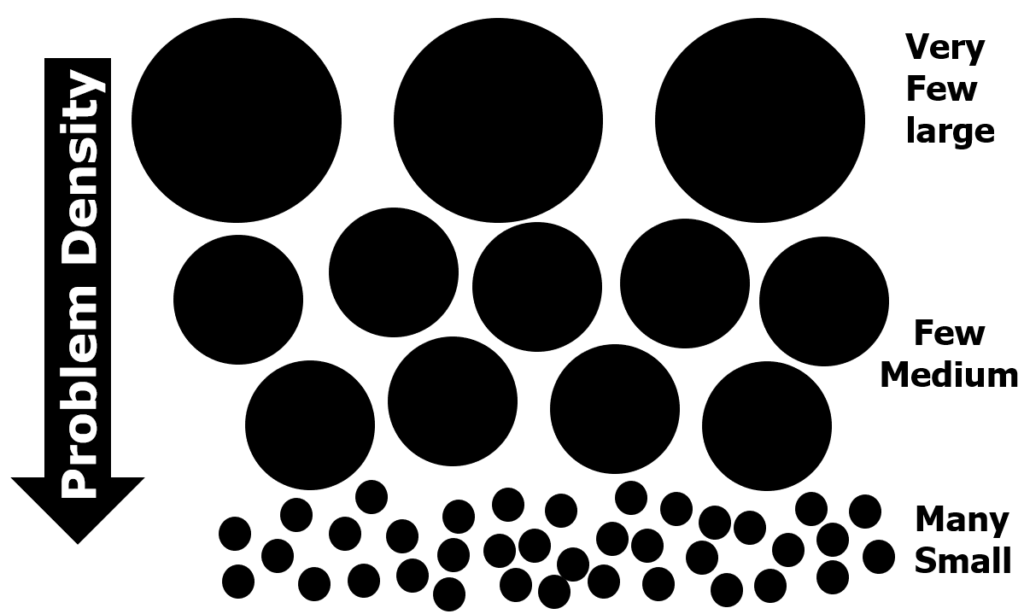
A few medium size & medium complexity problems can be tackled directly by line management with the support of selected team members / stakeholders
Many small problems with less complexity would be better addressed quickly, directly by team Leaders & team members involved with the work
Largest density of many small problems are usually hidden from management. (As managers don’t directly do the work). A lot of organisations concentrate on the large or medium problems. As this is where the senior management are focused on a “day to day” level.
However some large and medium problems start off as small problems and escalate to large ones!
Everyone in an organisation needs to identify and contribute to solving the many small problems
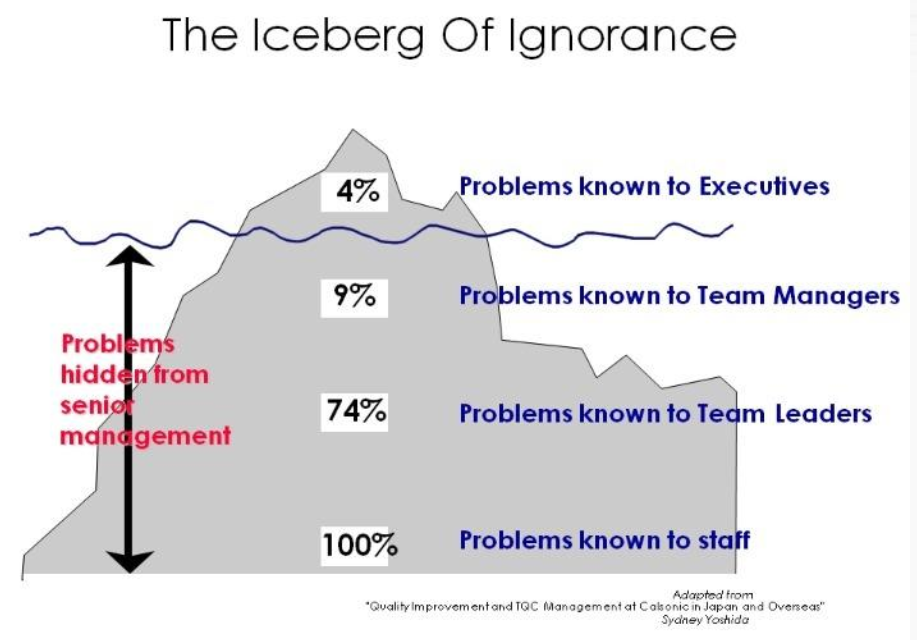
The right way to develop Problem Solving Skills
Skills cannot be developed through one off training. But are taught & coached directly by a capable line manager, “on the job” with a real situation.

Team Member capability development should always be done by line management to :-
- Show the importance of Problem Solving , starts with getting everyone to identify problems!
- Enable EVERYONE in the organisation to be developed in the correct skill level through direct & continual teaching and coaching
- Gives consistency and sustainability of approach to enable the right mindset and culture
- That Team Members can feel valued and respected about their input – as they are the process experts
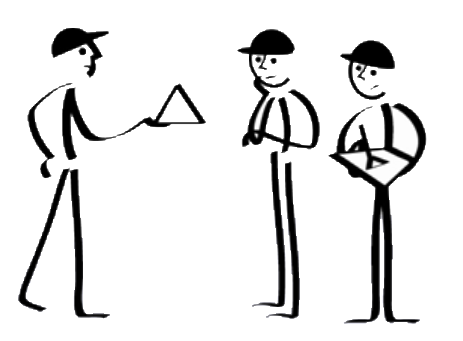
Leaders must ensure recognition & feedback is given to team members. So they can learn and adjust their approach / thinking to the right way to solve a problem.
More Advanced Problem Analysis Methods usually require existing or external experts to develop people to the correct skill level over a long period of time.
This is usually done through a series of on and off the job learning programmes. Careful consideration on who the few people who maybe need to be developed in these methods.
How do you start learning Problem Solving as a leader ?
As a Leader/ manager we recommend you start with the 8 Step A3 Practical Problem Solving that is a proven method based on Toyota 8 Step approach for developing leaders to solve problems.
Learning this method enables Managers, Team leaders and Functional Specialists etc to tackle most medium and mid complexity problems for their current and near term business challenges in their organisations.
Once Managers and Team Leaders have achieved level 3 capable skill in 8 Step Practical Problem Solving, they can easily “teach and coach” the more simple Rapid Problem Solving methods to Team Members to work on the many small problems
Our recommended Lean Learning Journey for 8 Step Practical Problem Solving
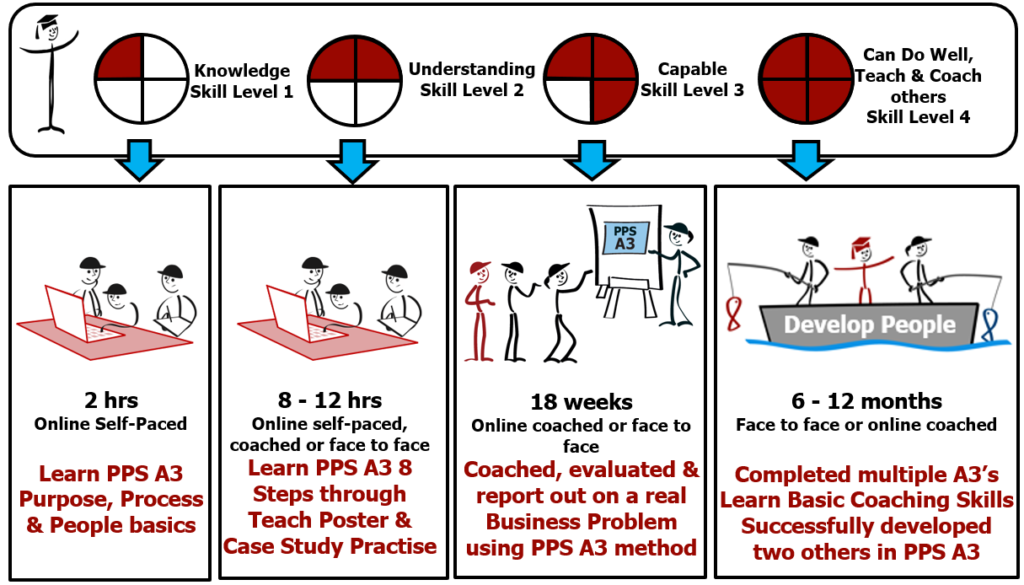
Not Every Problem Requires an A3!
For more information , materials & courses on Problem Solving , please visit our online shop
-
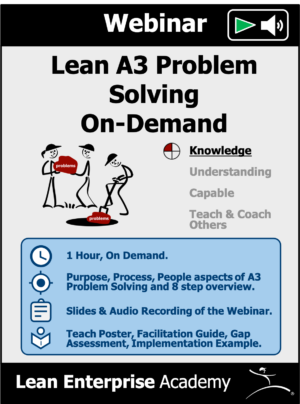 A3 Problem Solving On-Demand Webinar£24.99
A3 Problem Solving On-Demand Webinar£24.99 -
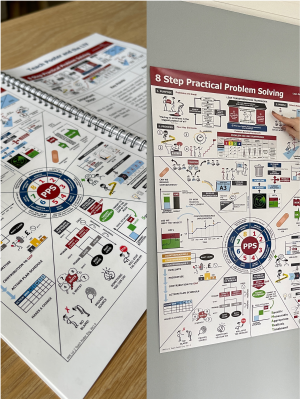 8 Step Practical Problem Solving Bundle – Teach Poster & Facilitation Guide£64.99
8 Step Practical Problem Solving Bundle – Teach Poster & Facilitation Guide£64.99 -
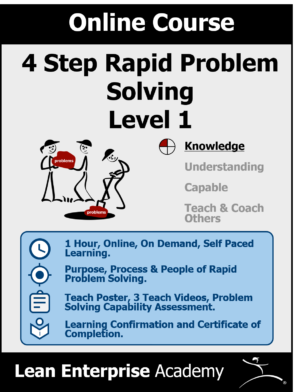 4 Step Rapid Problem Solving – Skill Level 1: Knowledge£0.00
4 Step Rapid Problem Solving – Skill Level 1: Knowledge£0.00 -
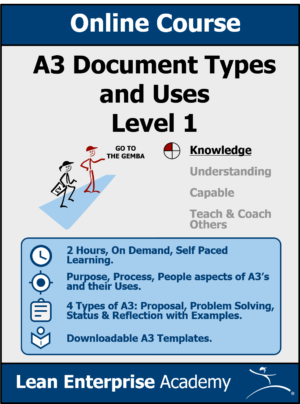 A3 Document Types & Uses – Skill Level 1: Knowledge£9.99
A3 Document Types & Uses – Skill Level 1: Knowledge£9.99 -
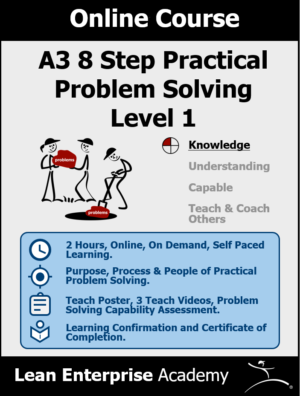 A3 8 Step Practical Problem Solving – Skill Level 1: Knowledge£0.00
A3 8 Step Practical Problem Solving – Skill Level 1: Knowledge£0.00 -
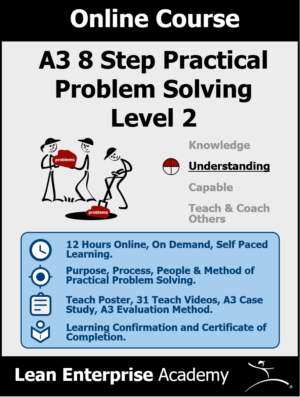 A3 8 Step Practical Problem Solving – Skill Level 2: Understanding£50.00
A3 8 Step Practical Problem Solving – Skill Level 2: Understanding£50.00 -
 Four Types of Problems£42.00
Four Types of Problems£42.00
R